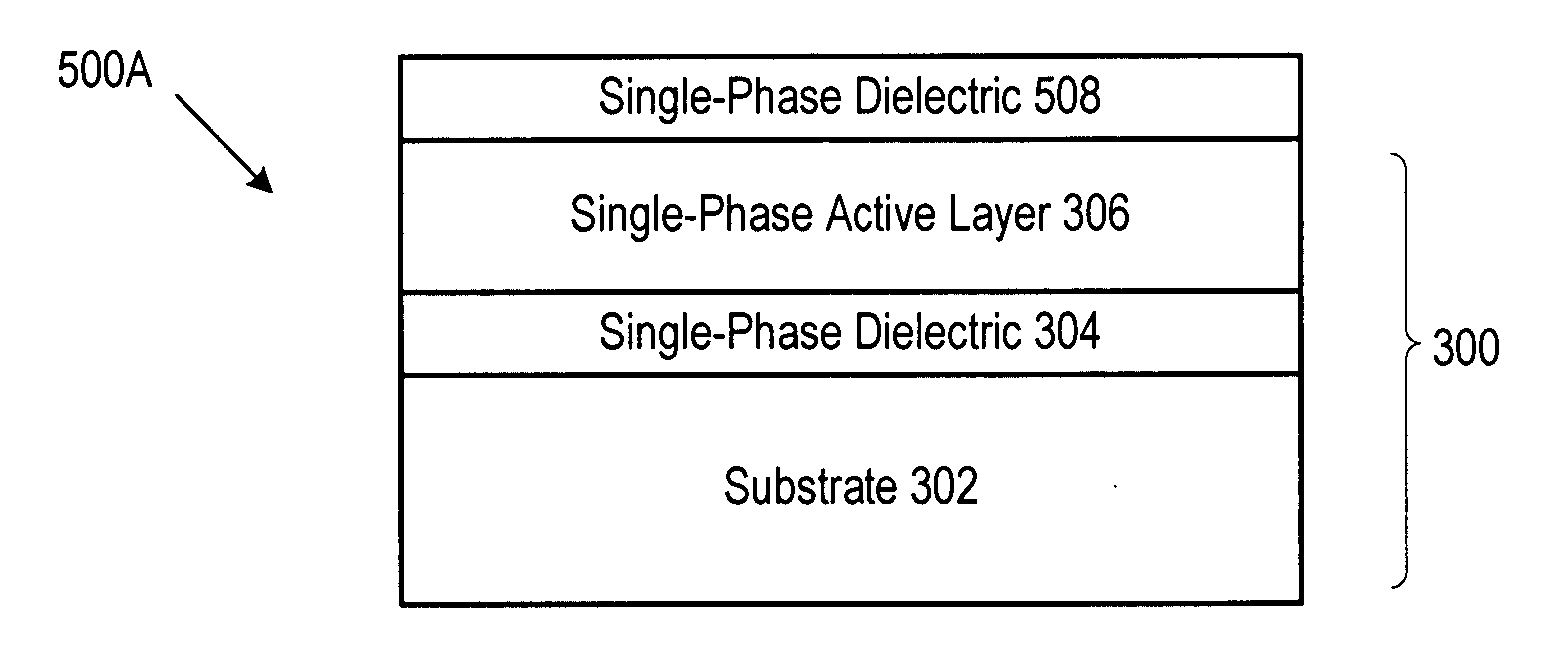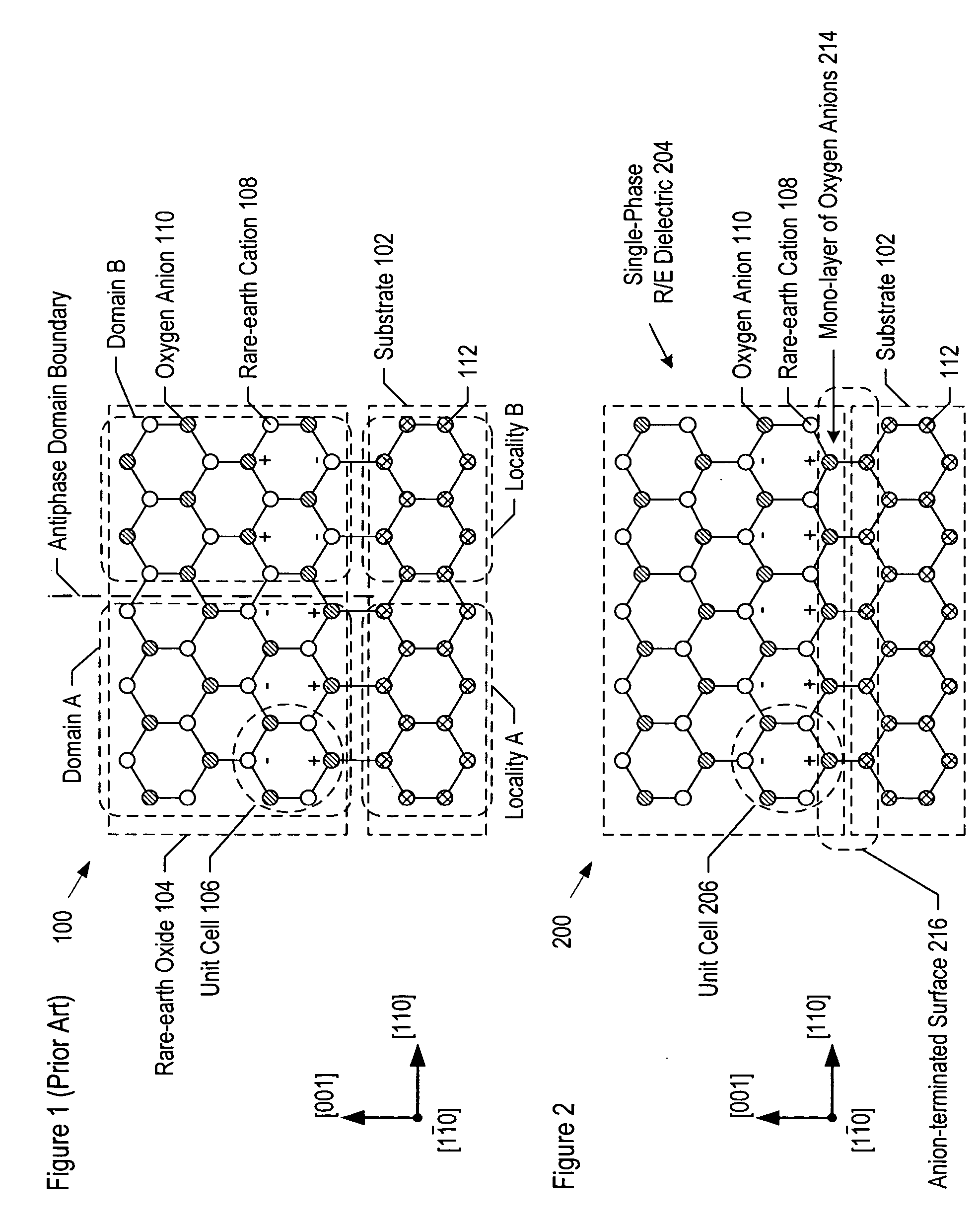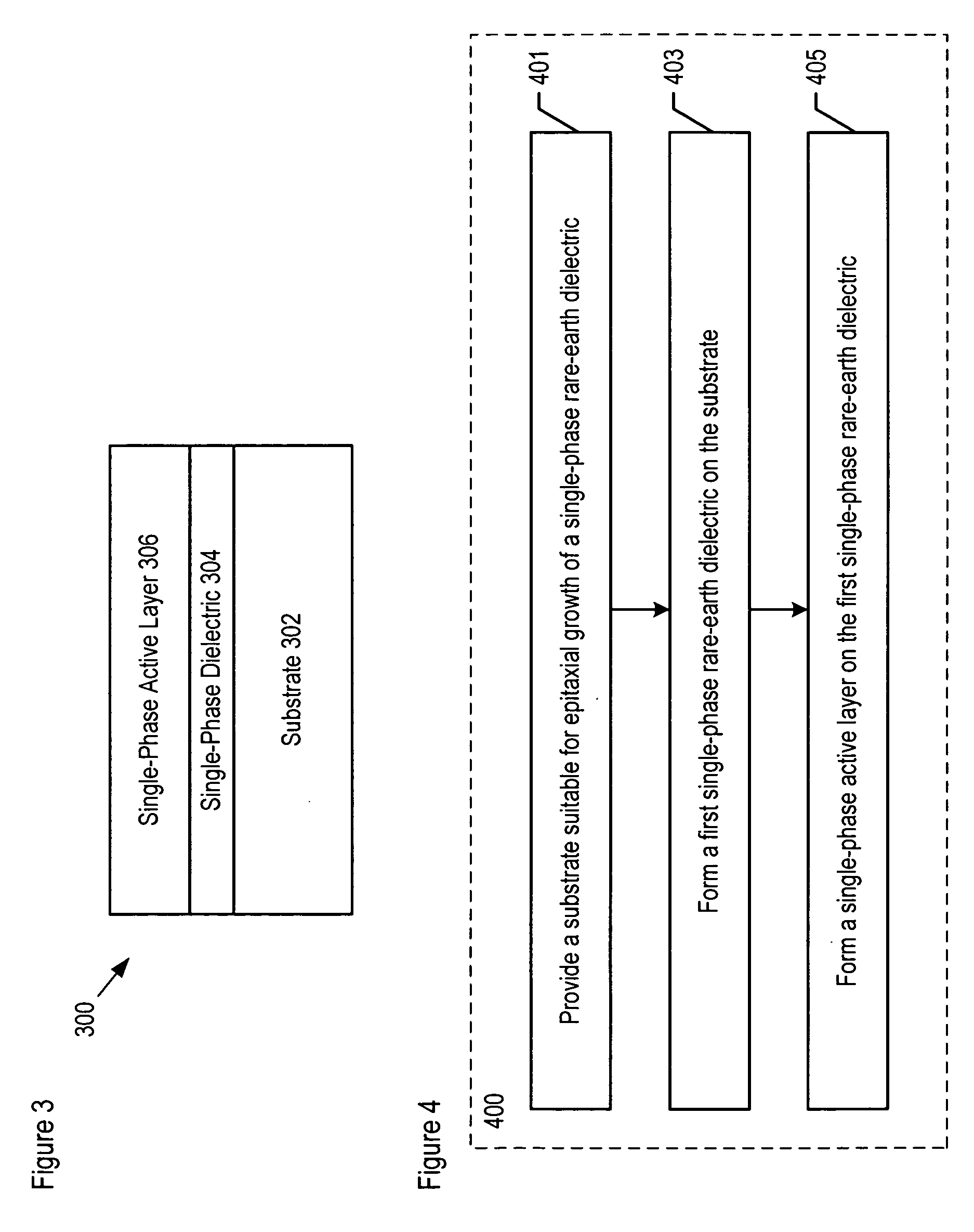Method of forming a rare-earth dielectric layer
a rare earth and dielectric layer technology, applied in the direction of polycrystalline material growth, semiconductor lasers, instruments, etc., can solve the problems of low availability, high cost, and material for the fabrication of integrated circuits that have not achieved commercial acceptance,
- Summary
- Abstract
- Description
- Claims
- Application Information
AI Technical Summary
Benefits of technology
Problems solved by technology
Method used
Image
Examples
example 1
FOR TECHNIQUE 1 DEPOSITION OF AN OXYGEN-MONOLAYER AS TEMPLATE LAYER 706
[0142] For this growth, template layer 706 comprised a monolayer of oxygen atoms, thereby providing an anion-terminated surface, and thereby providing an energetically-favorable bonding surface for cations (i.e., rare-earth metal cations). The oxygen atoms terminated the semiconductor (e.g., silicon) bonds that were available at the surface of wafer 702.
[0143] Template layer 706 was grown on wafer 702 at a temperature in the range of 300° C. to 500° C. and in an atmosphere of 10−7 Torr oxygen background pressure, consistent with operation 705. ALE was used to grow the template layer. In some other embodiments, the ALE is conducted at a temperature in the range of 500° C. to 700° C. and in an atmosphere of 10−8 Torr oxygen background pressure. In this example, as well as alternative embodiments, ultra-low beam pressure plasma sources are used for the production of atomic and metastable oxygen species.
example 2
FOR TECHNIQUE 1 DEPOSITION OF SILICON DIOXIDE AS TEMPLATE LAYER 706
[0144] In this example, template layer 706 comprised a few monolayers of silicon dioxide molecules, thereby providing an anion-terminated surface. Silicon dioxide was deposited using ALE, which was conducted at a temperature in the range of 300° C. to 500° C. and in an atmosphere of 10−7 Torr oxygen background pressure. In some embodiments, ALE is conducted at a temperature in the range of 500° C. to 700° C. and in an atmosphere of 10−8 Torr oxygen background pressure.
example 3
FOR TECHNIQUE 1 DEPOSITION OF A RARE-EARTH AS TEMPLATE LAYER 706
[0145] In this example, template layer 706 comprised 1-10 monolayers of erbium atoms, deposited on wafer 702 using ALE. Template layer 706, therefore, provided a cation-terminated surface which provides an energetically-favorable bonding surface for cations. Template layer 706 was formed using ALE to deposit erbium atoms. Growth conditions for erbium template layer 706 included a growth temperature in the range from 25° C. to approximately 700° C., at a maximum oxygen background pressure of 10−9 Torr.
[0146] Technique 2—Compensation with an Oxide or a Nitride
[0147]FIG. 8A depicts a composition that includes wafer 702 and oxy-nitride or nitride layer 804. In some embodiments, these layers collectively represent substrate 302 of composition 300 of FIG. 3. As described further below, oxy-nitride or nitride layer 804 provides a preferential growth surface for cations 108.
[0148]FIG. 8B depicts the details of operation 401 ...
PUM
| Property | Measurement | Unit |
|---|---|---|
| angle | aaaaa | aaaaa |
| atomic number | aaaaa | aaaaa |
| thickness | aaaaa | aaaaa |
Abstract
Description
Claims
Application Information
 Login to View More
Login to View More - R&D
- Intellectual Property
- Life Sciences
- Materials
- Tech Scout
- Unparalleled Data Quality
- Higher Quality Content
- 60% Fewer Hallucinations
Browse by: Latest US Patents, China's latest patents, Technical Efficacy Thesaurus, Application Domain, Technology Topic, Popular Technical Reports.
© 2025 PatSnap. All rights reserved.Legal|Privacy policy|Modern Slavery Act Transparency Statement|Sitemap|About US| Contact US: help@patsnap.com



